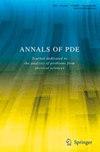The Obukhov–Corrsin theory of scalar turbulence [21, 54] advances quantitative predictions on passive-scalar advection in a turbulent regime and can be regarded as the analogue for passive scalars of Kolmogorov’s K41 theory of fully developed turbulence [47]. The scaling analysis of Obukhov and Corrsin from 1949 to 1951 identifies a critical regularity threshold for the advection-diffusion equation and predicts anomalous dissipation in the limit of vanishing diffusivity in the supercritical regime. In this paper we provide a fully rigorous mathematical validation of this prediction by constructing a velocity field and an initial datum such that the unique bounded solution of the advection-diffusion equation is bounded uniformly-in-diffusivity within any fixed supercritical Obukhov-Corrsin regularity regime while also exhibiting anomalous dissipation. Our approach relies on a fine quantitative analysis of the interaction between the spatial scale of the solution and the scale of the Brownian motion which represents diffusion in a stochastic Lagrangian setting. This provides a direct Lagrangian approach to anomalous dissipation which is fundamental in order to get detailed insight on the behavior of the solution. Exploiting further this approach, we also show that for a velocity field in \(C^\alpha \) of space and time (for an arbitrary \(0 \le \alpha < 1\)) neither vanishing diffusivity nor regularization by convolution provide a selection criterion for bounded solutions of the advection equation. This is motivated by the fundamental open problem of the selection of solutions of the Euler equations as vanishing-viscosity limit of solutions of the Navier-Stokes equations and provides a complete negative answer in the case of passive advection.





